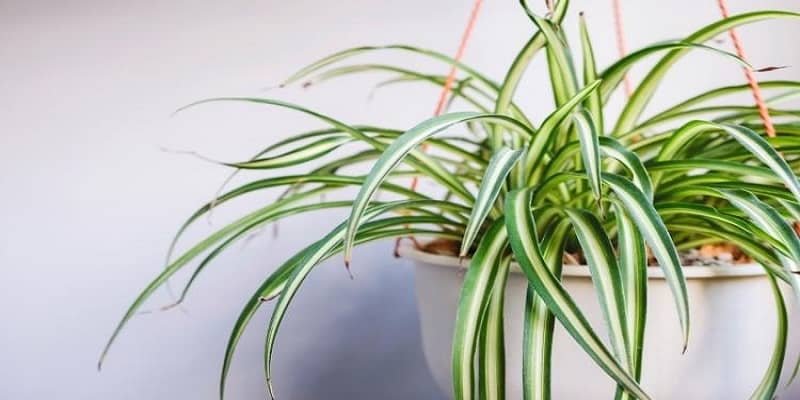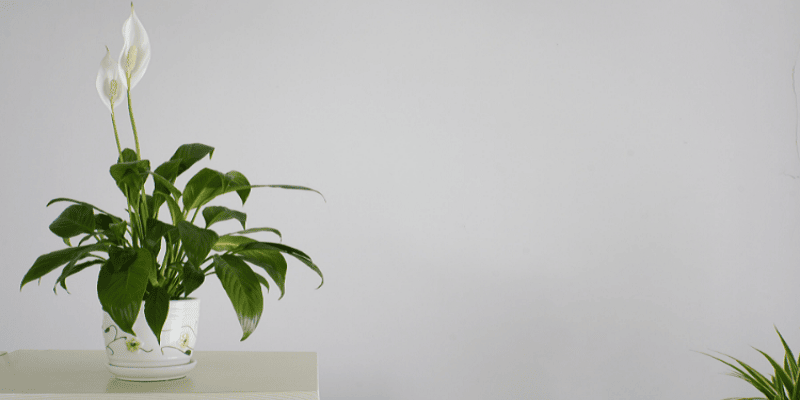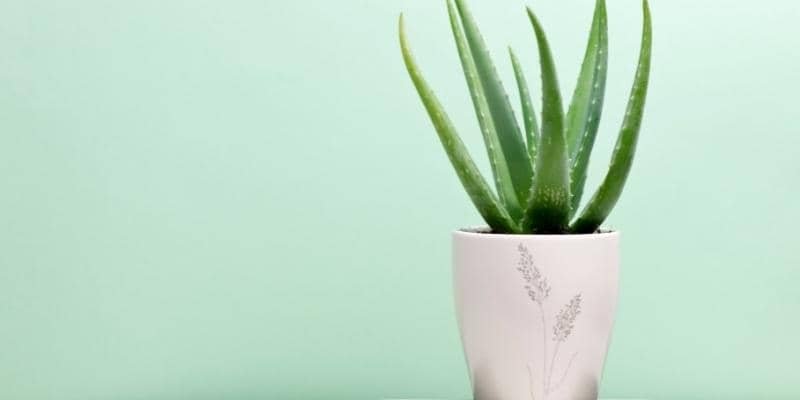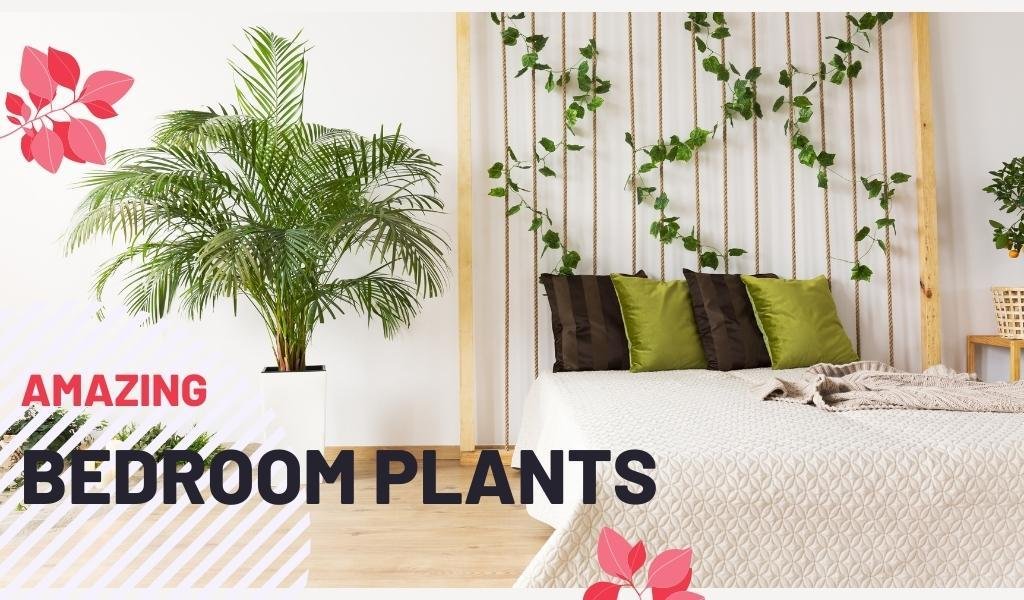Bedroom plants play an imperative role in everyone’s lives by providing amazing benefits such as enhancing the beauty of your room, improving mental health, giving better sleep, fresh air, and many more. Many of us have no idea how significant air quality is. Insulation, color, and furniture in our homes can contaminate the air inside us with toxins like formaldehyde and benzene. If you want to purify the air in your home, then you should think about growing plants in your home. Plants absorb toxic pollutants from the air and release oxygen, so you can breathe clean and fresh air. Bedroom plants not only provide numerous health benefits, but they also help to decorate your home and increase energy.
If you are thinking of adding a little greenery to your room and home, you will find a few amazing bedroom plants in this guide.
Popular Bedroom Plants
1. Snake Plant

Scientific name: Dracaena trifasciata
This plant is also known as mother-in-law’s tongue. This extremely low-maintenance plant is the best choice for the bedroom as it not only claims a place in NASA’s list of top 10 air-purifying plants, but is also one of the few plants. This plant releases oxygen even at night also, so you can feel refresh and it enhance the sleep. It requires water occasionally and bright sunlight.
2. Heart Leaf Philodendron

Scientific name: Philodendron hederaceum
The Philodendron is a popular houseplant on NASA’s top 10 list because it is almost impossible to kill. The heart-shaped leaves of this posterior plant come in a variety of visually appealing variations and are specifically effective in absorbing formaldehyde. This plant is considered poisonous when it is eaten, so stay out of the reach of pets and children. This bedroom plant needs bright to moderate sunlight to grow well. This plant does not require water regularly.
3. English Ivy

Scientific name: Hedera helix
The other behind-the-scenes beauty that ranks high on NASA’s list is that English Ivy is highly effective in absorbing toxic pollutants from your room, such as benzene, formaldehyde, carbon dioxide, and so on. English ivy does not only help to detoxify our air, but also research finds that it is able to cleanse the air of mold and animal feces, and also improve allergy symptoms. Moderate sunlight is appropriate for growing this bedroom plant. This plant needs water regularly, so you should care for it.
4. Golden Pothos

Scientific name: Epipremnum aureum
Like the heart leaf philodendron, the back pothos is effective in cleaning pollutants from the air, and it is easy to maintain, as they do not require much care. It is helpful in enhancing the beauty of your bedroom. You can also breathe fresh air because of these kinds of bedroom plants. It spreads the best fragrance in your home. They need bright sunlight and regular water. It has been named The Cubic Plant because of its tolerance.
5. Spider Plant

Scientific name: Chlorophytum comosum
It is suitable for hanging planters. This bedroom plant is effective in combating various pollutants like benzene, formaldehyde, xylene, carbon dioxide, and many more. During early growth, keep the plant exposed to occasional bright to moderate sunlight and water. Once you have had a plant for one year, they give it water moderately.
6. Rubber Plant

Scientific name: Ficus elastic
This low-maintenance beauty, with its attractive wild green leaves, is a powerful detoxifier and air purifier. The leaves of this plant absorb large amounts of contaminants to make indoor air quality excellent. Let the plant dry in the middle of the water and keep it in moderate to low sunlight. It requires water occasionally. This plant helps to remove harmful substances from the indoor air.
7. Gardenia

Scientific name: Gardenia jasminoides
The gardenia is a little bit more preservative than other bedroom plants, but the extra care required will definitely be right for you. This plant blooms with beautiful scented flowers that are the best choice for the bedroom. One study has shown that this plant can help you overcome anxiety and get a good night’s sleep. Be sure to expose the plant to bright sunlight and keep the soil constantly moist. You need to water this plant weekly.
8. Peace Lily

Scientific name: Spathiphyllum
The peace lily produces amazing white flowers that are perfect for indoor space, as they are known for filtering the air of toxic pollutants. This plant is toxic, so be sure to keep it away from pets and children. For taking care of this bedroom plant, you need moist soil and to place it in an area of your home where there is moderate to bright indirect sunlight. They need moderate indirect sunlight and regular water.
9. Areca Palm

Scientific name: Dypsis lutescens
This plant adds succulent beauty to any indoor space. This plant is proud of its air purification capabilities that eliminate harmful toxins from the air. One study found that areca palm is the best plant for eliminating chemical substances from indoor space. For fast growth, they require bright indirect sunlight, and moist soil is necessary for better growth. You need to give them water regularly. The Areca palm produces yellow flowers in the late spring and early summer. They have a long lifespan of about 4 decades. It takes around 10 years to reach the maturity phase. It needs regular fertilizer to grow quickly.
10. Aloe Vera

Scientific name: Aloe vera
It is one of the top plants in NASA’s air purification plants. It releases oxygen at night, which makes it suitable for your bedroom. This plant requires low-maintenance, so it can survive for 3 weeks without water. It has many medicinal properties that help to get relief from dangerous health problems. When applied topically, the juice from their leaves can be used for scrapes and burns. It requires bright indirect sunlight and water occasionally.
Indoor plants have several benefits in different fields. There are many bedroom plants that are mentioned above that have numerous positive impacts. If you grow these plants in your bedroom, then you can breathe fresh air and get a good sleep. They give a different look to your home. They release oxygen into the air even at night and day. Therefore, everyone should know about these kinds of plants and try to keep them in their homes and bedrooms.
Hope, you liked reading the guide. If you think we have missed something or have any suggestion, please drop your valuable opinion in the comment section below.
If you are searching fresh and live houseplants online then checkout our extensive collection of amazing indoor and outdoor houseplants.

